Dear creative friends,
Welcome to Issue No. 70 of the Studioworks Journal! I'm thrilled to have you here with me as we embark on a journey through the evocative world of dark academia. This theme invites us to explore the mysterious allure of ancient libraries, shadowed corridors, and the profound beauty found in intellectual pursuits. Plus, it goes rather perfectly with October and this holiday season don’t you think?
For those of us who cherish the magic of Harry Potter or the quiet solace of a dusty, old bookstore, this issue is for you. We’ll delve into how these elements can deepen our creative expressions, imbuing our work with a sense of history, depth, and the rich textures of a bygone era. How can we capture the essence of forgotten knowledge, the romance of the written word, and the quiet power of reflection in our art?
Let’s explore these themes together, embracing the beauty of the dark and the light within our creative souls.
xo,

So you may be wondering, where do I start? To that, I say, wherever feels right to you. Each month we will have a theme, a creative affirmation, a power word, a color palette, sketchbook exercises, art projects, articles, recommended reading, and access to wonderful inspiration and resources. I want you to think of this as a delicious new magazine, you know the ones you occasionally splurge on, with soft, velvety pages, beautiful images, and inspiring content!
Each issue will invite you to explore your creative practice in whichever way works for you. Experience each issue at your own pace. Take what resonates with you and put the rest aside for another time.
Grab a cup of something lovely and dive in.
When considering Dark Academia, a natural association that surfaces is what casts a shadow or pall over institutions of learning. In other words, what makes education dark? At first glance, some things that bubble up are elitism, hierarchy, racism, sexism, and religious monopolization of learning—pretty dark stuff.
However, the aesthetic of Dark Academia is not just about the dark aspects of learning. It is a romantic, edifying, and profoundly attractive journey that invites us to be excited about the learning process and empowers us to let our imaginations run, no matter our circumstances. It reminds us of the profound transformative power available in a book, a poem, or a work of art. It liberates us to explore what intrigues us, even when we find darkness there.
This brings to mind Carl Jung and his concept of 'shadow work,' which involves examining and integrating our personality's darker, unconscious aspects. In a similar vein, Dark Academia encourages us to delve into these shadowy aspects, not to dwell in them, but to understand and incorporate them into our creative process.
Perhaps, as artists, Dark Academia permits us to be honest about ourselves and teaches us to play a little with our shadow selves. What better time to take this journey than during the Fall? The world beckons us to go inward; this aesthetic offers a path to befriend what we find there. Join me in going beyond the surface and finding inspiration in the occluded depths.
Autumn is a season often associated with the aesthetic and subculture of Dark Academia. The days retract into longer nights, the greens fade into gold, umber, and black, and the aura of melancholic nostalgia lends itself to an atmosphere of reflection. Much of the art and architecture that influence the genre are imbued with a sense of moodiness that is enhanced by chilly fog, rain-splashed windows, and the call to curl up by a blazing fire with a book or three.
Leaning into this environmental set of queues is a good place to draw from as you create the backdrop for your deep dive. To further set the tone, you could make a playlist of classical music, such as Beethoven's Moonlight Sonata or Tchaikovsky's Swan Lake, watch a film or series that reflects Dark Academia themes (binge-watch all the Harry Potter movies, perhaps?), light candles, or surround yourself with evocative books that touch on themes of intellect, mortality, and melancholy, like If We Were Villians by M. L. Rio or The Complete Poems of Emily Dickenson.
Once you’ve conjured the vibe, consider combining traditional artistic elements with contemporary flair using visual motifs like old books, ivy-clad edifices, dark color palettes, ink, and parchment. From this womb of creativity, open yourself to closer examination. What do these themes call up for you? How are the ideas that emerge transmutable into a piece that reflects parts of you perhaps previously unexamined?
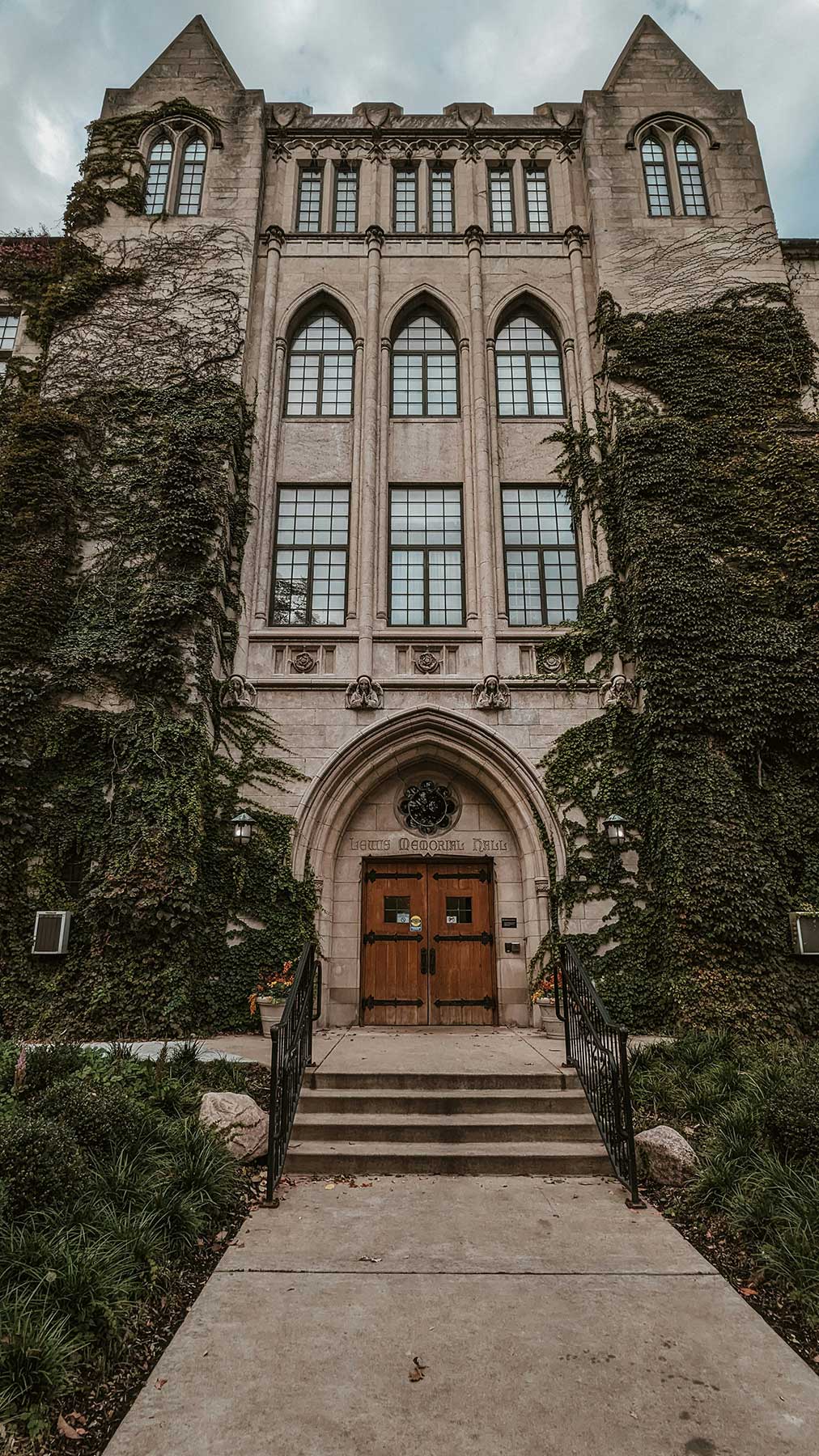
Take your time here. Don’t force anything. Allow your unconscious mind the freedom to surface. If you are having trouble getting started, you might try free sketching, word association, collage, or repeating patterns such as those in a mandala. If, on the other hand, ideas flow effortlessly, give them free rein. Don't inhibit yourself even if you find some of what comes forth disturbing. The goal is not just to create art but to embark on a journey of self-discovery and acceptance. At the end of the day, you can burn what you made if that feels right; the point is to say yes to all that you are and explore ways to create from the wholeness of internal unity.
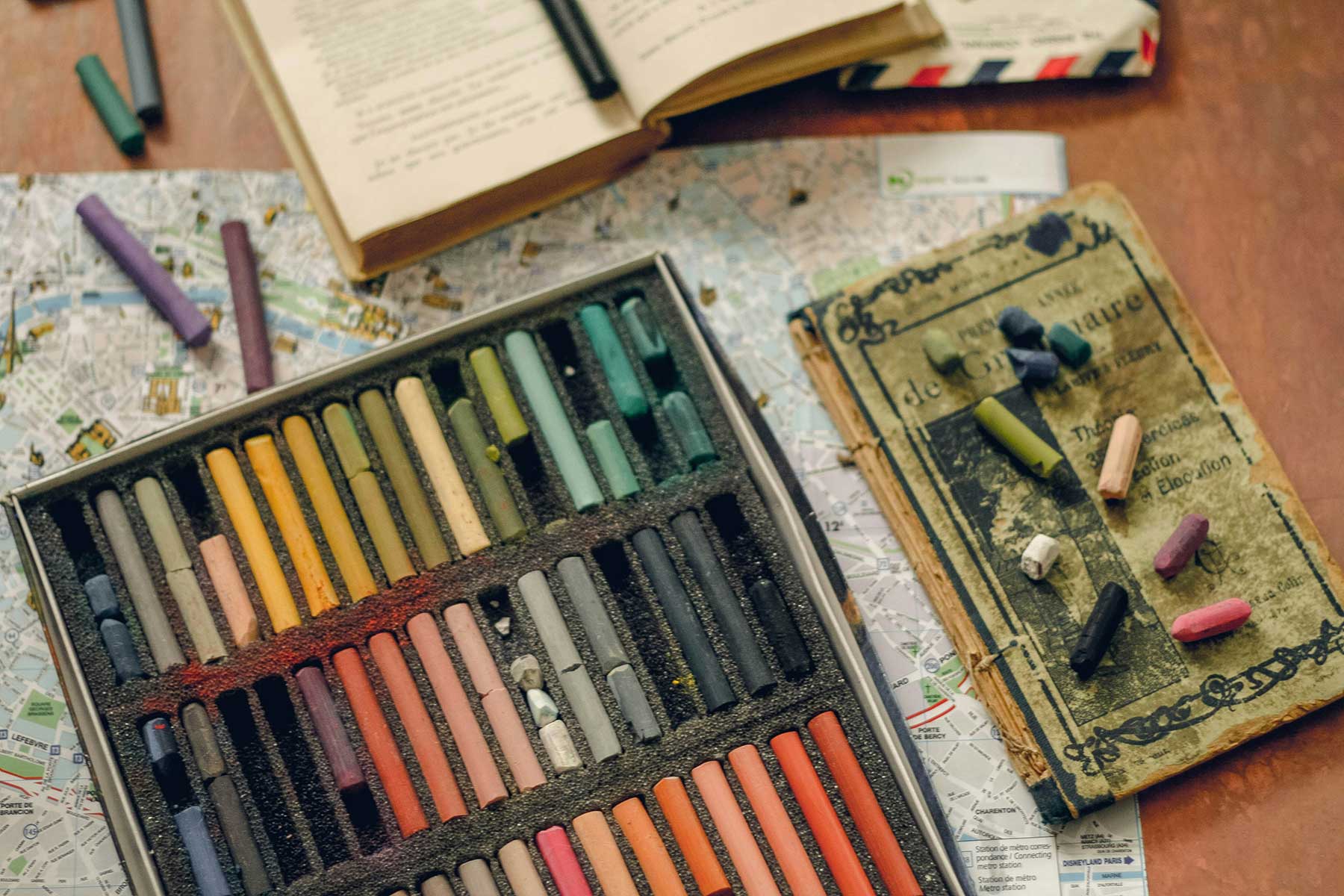
Dark Academia brings the shadow to the fore, beckoning us to engage in deep self-examination even as it plays with surface aesthetics. The mood of old institutions of higher learning, with their aura of exclusivity; the attractiveness of fancy school uniforms, with their elitist signaling; the grandeur of ancient Greek and Gothic architecture, with its intimidating beauty; and the profound yearning to discover esoteric truths can operate on several levels.
They can simply influence the way you style a room or how you dress, or they can take you deeper into yourself, allowing you to embrace the contradictions inherent in being human. We bring greater appreciation to our romanticizing and idealizing when we acknowledge the cost of those luxuries. In doing so, we might also visualize and work to materialize a world in which any and all have access to those wondrous things. In doing so, we foster a delicate balance between yin and yang, holding light in the dark and vice versa and making some compelling art in the process.
Though some might imagine that Dark Academia originated on social media, those in the know can readily see the makings of this genre in works of literature, poetry, and art spanning centuries. Many influential pieces, from Caravaggio’s St. Jerome Writing to Oscar Wilde’s The Picture of Dorian Grey, laid the framework for this aesthetic. It’s all about an alluring and shadowy ambiance typified by classical architecture coupled with the mystique of secret societies and, naturally, chic scholarly garb. This atmosphere creates an ideal spooky labyrinth to explore during this resplendent fall season, drawing you in with its enigmatic charm.
Join me in meandering the Twilit corridors of history, unearthing the dark and mysterious themes that weave through this alluring artistic lens. However, reader beware: You may find yourself thoroughly bewitched by this arcane dance of shadows and scholars.
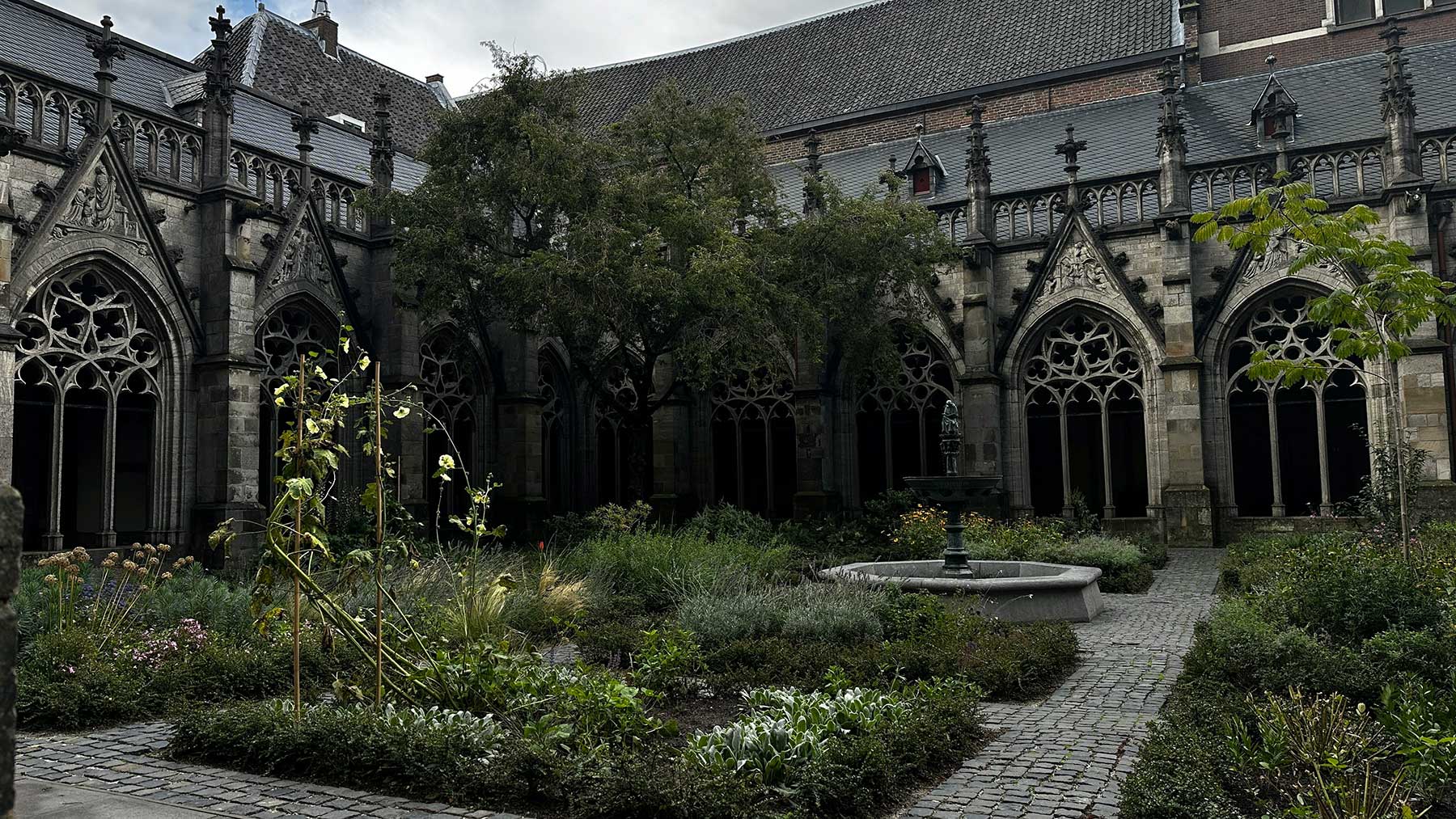
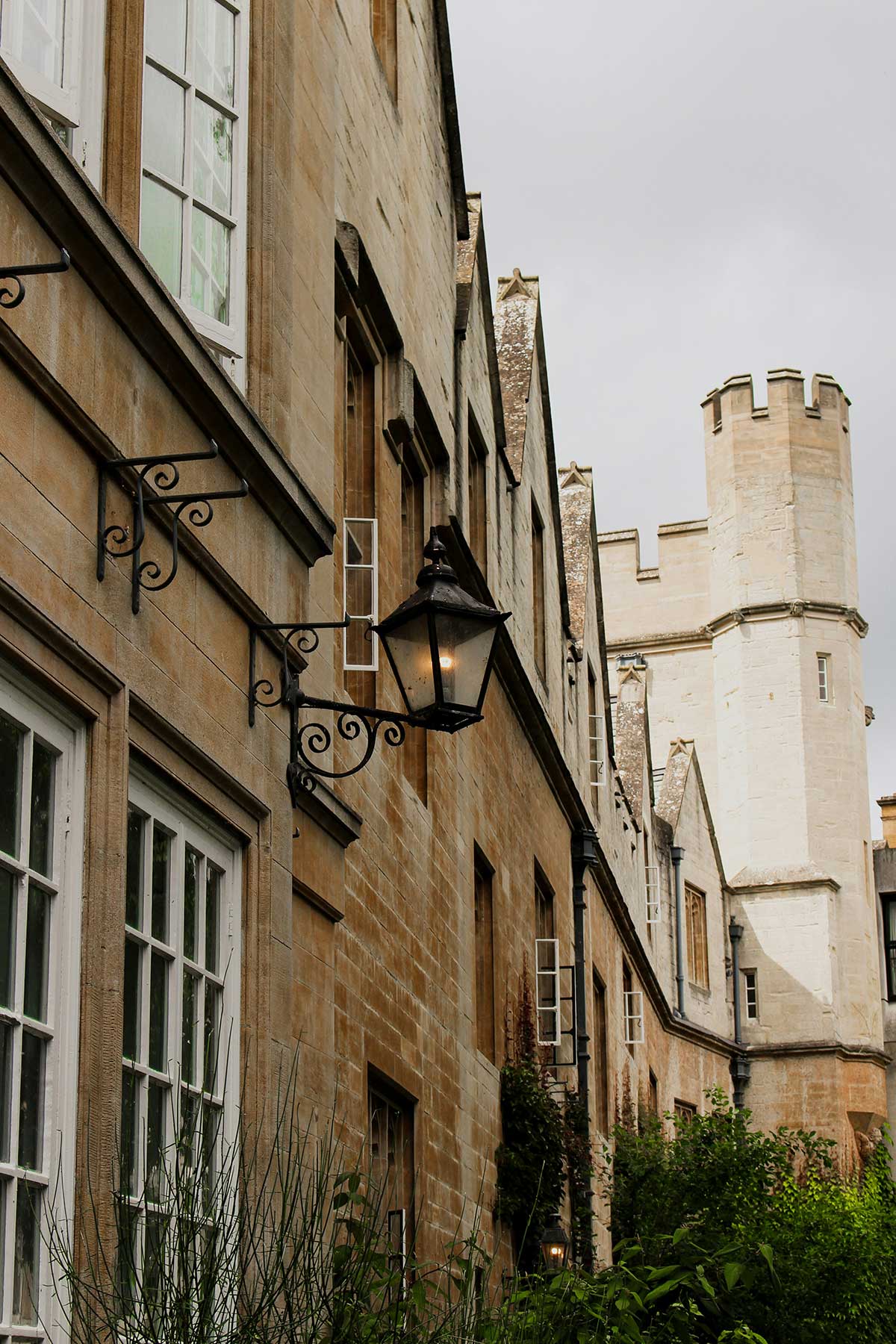
We cannot speak of Dark Academia without mentioning the historical air of secrecy surrounding the acquisition of knowledge and the shroud of mystery surrounding the hallowed halls of learning epitomized by institutions such as Oxford, the oldest in the English-speaking world. The tangible qualities of antiquity, dark wood, and a palatial library teeming with leather tomes all loom large in the making of the genre.
In addition, the darkness and shadow that prevail in Gothic architecture undeniably create the backdrop most readily associated with Dark Academia. From the sinister and agonized faces of gargoyles to the gorgeous spines of cathedral ceilings, there is a beauty and drama that simultaneously attract and repel, lending just the right tone for an aesthetic centered on the shadowy side of classic literature, poetry, art, calligraphy, and higher learning.
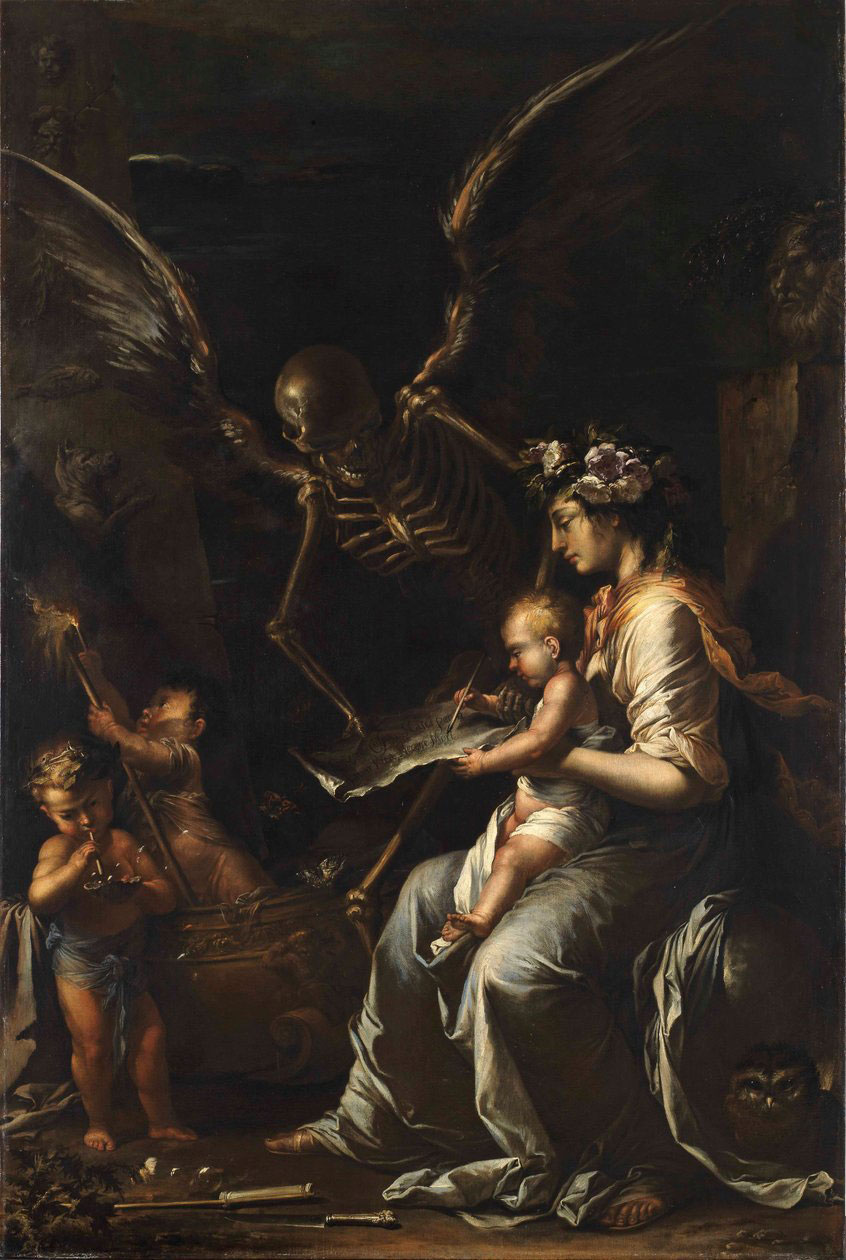
In addition to venerated institutes and classical architecture, Renaissance and Baroque paintings also encapsulate much of the vibe that gives life to this genre. From the knowing smile of Leonardo Da Vinci’s Mona Lisa to the grim hand of death guiding a child’s hand in Salvator Rosa’s Human Fragility, there are ample pieces that show the crepuscular side of knowledge, drawing us in while making our spines tingle.
Finally, we mustn’t ignore Romanticism’s part in the genre. The Romantics were drawn to the sublime, attracted to melancholy, and relentlessly pursued knowledge. They emphasized emotions and imagination while honoring the historical. These traits all align seamlessly with the ethos of Dark Academia with its nostalgia, moodiness, and idealization of learning. Some emblematic examples of this can be seen in William Blake’s Songs of Innocence and of Experience and Caspar David Friedrich’s An Artist in his studio contemplating the moonlit street from his opened window.
There is some debate about what spurred the current popularity of Dark Academia. Some say it all began with the 1989 film Dead Poet’s Society. Others claim that it stems from a 1992 book by Donna Tartt, The Secret History. Others still believe that the movement is due to the Harry Potter Generation coming of age just in time to gobble up trends emerging on Tumblr and Instagram that highlight dark themes, Gothic revival interiors, Autumnal imagery, cardigans, blazers, houndstooth, and tweed.
Whatever the case, Dark Academia taps into a deeply held cultural fascination with darkness, particularly when married to beauty and sagacity. We find a wistful romance in the idea of sitting by candlelight in some elegantly cluttered room with books strewn around us, writing calligraphy with a fountain pen. This genre allows us to take those flights of fancy with little more than a cardigan and a copy of Frankenstein or Wuthering Heights, evoking a sense of nostalgia and romance.

Dark Academia is an aesthetic with deep historical roots. From its emphasis on vaunted and esoteric knowledge, as exemplified by the world’s oldest universities, to its borrowing generously from gothic architecture and art, not to mention Baroque, Renaissance, and Romantic influences. The genre continues to grow and evolve with time, inspiring artists and capturing new audiences in its umbrus web, offering a timeless connection to a rich cultural tradition.
William Blake stated that it was his intention for his works to reveal “the two contrary sides of the soul.” We think of knowledge as shedding light in dark places, and thus, in shadows and scholars, we have found the union of dark and light. In recognizing this consortium of our polarities, we may have unearthed the source of Dark Academia’s historical and enduring appeal.
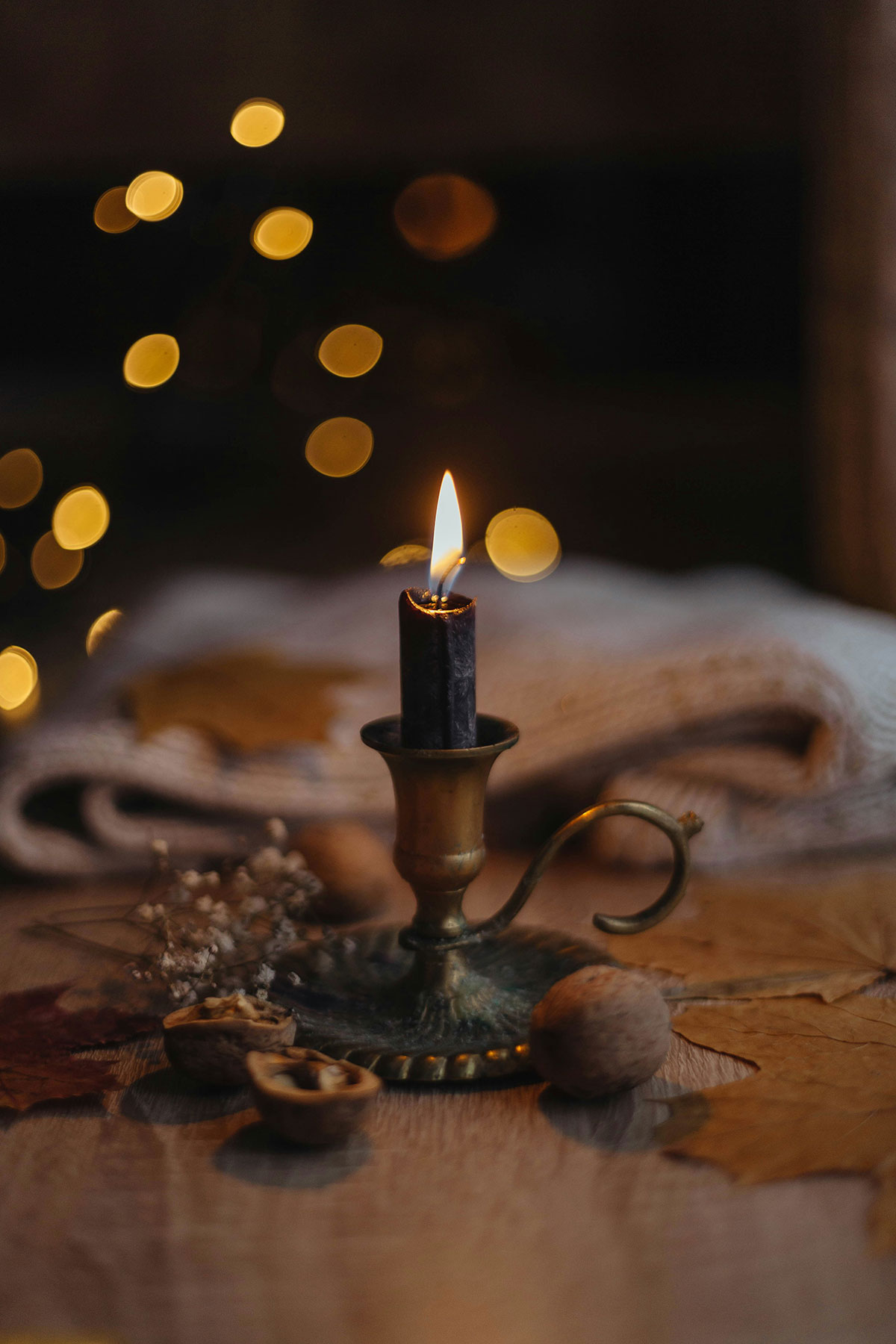
The dictionary definition of Mystique is:
Mystique (adjective):
An air of mystery and reverence that surrounds something or someone.
How does this word relate to our theme?
Mystique, by definition, is an air of mystery and reverence that surrounds something or someone. But for us as artists, it’s so much more than that.
Mystique is that elusive, intangible quality that breathes life into our work, giving it depth and intrigue beyond what’s immediately visible. It’s what draws people in, inviting them to linger a little longer, to explore the hidden layers, the emotions, and the meanings that lie just beneath the surface.
In my own creative process, mystery is often the spark that ignites my imagination. It’s what pushes me to dive into themes that aren’t always clear or easily understood, to play with the unknown, and to infuse my art with subtle complexities. It allows me to create work that’s not just seen but felt, leaving space for others to find their own stories and connections within it.
As artists, we have the power to weave a sense of wonder and mystery into everything we create. This mystique is what makes our art compelling, what keeps people coming back for another look, searching for those hidden details and deeper meanings.
Within our theme of dark academia, it’s that sense of curiosity, the allure of the unknown, and the intellectual depth that makes this aesthetic so rich and inspiring. Embracing mystique in our art allows us to create pieces that resonate on a deeper level, that whisper secrets and invite others into our world.
Let’s tap into our creative intuition and do some self-reflective work inspired by our theme. Below you will see our month’s Oracle/Tarot card spread. But fear not, if you are not one drawn to using oracle or tarot cards, no worries, just use the accompanying reflective questions as writing prompts for your journals!
Card 1: The Scholar's Desk
Theme: Knowledge and Exploration
Question: What hidden knowledge or inspiration am I being called to explore in my creative journey?
Interpretation: This card invites you to delve into the depths of your intellectual curiosity. Reflect on the subjects, ideas, or historical influences that have always intrigued you but that you’ve yet to fully explore. Consider how these can be woven into your art, adding layers of meaning and depth to your work.
Card 2: The Shadowed Hallway
Theme: Confronting Fears and Doubts
Question: What fears or doubts are lingering in the shadows, holding me back from fully expressing my creative vision?
Interpretation: This card challenges you to face the darker, often hidden aspects of your creative process—those nagging doubts, fears of failure, or feelings of inadequacy. By acknowledging and confronting these shadows, you can transform them into powerful sources of motivation and breakthrough in your art.
Card 3: The Candlelit Library
Theme: Wisdom and Reflection
Question: How can I use my past experiences and accumulated wisdom to illuminate the path forward in my creative work?
Interpretation: This card encourages you to reflect on the lessons learned from past projects, successes, and even failures. Consider how these experiences have shaped your artistic identity and how they can guide you as you continue to evolve. Let your
Set the Mood:
Focus Your Intention:
Shuffle the Cards:
Draw the Cards:
Reflect on Each Card:
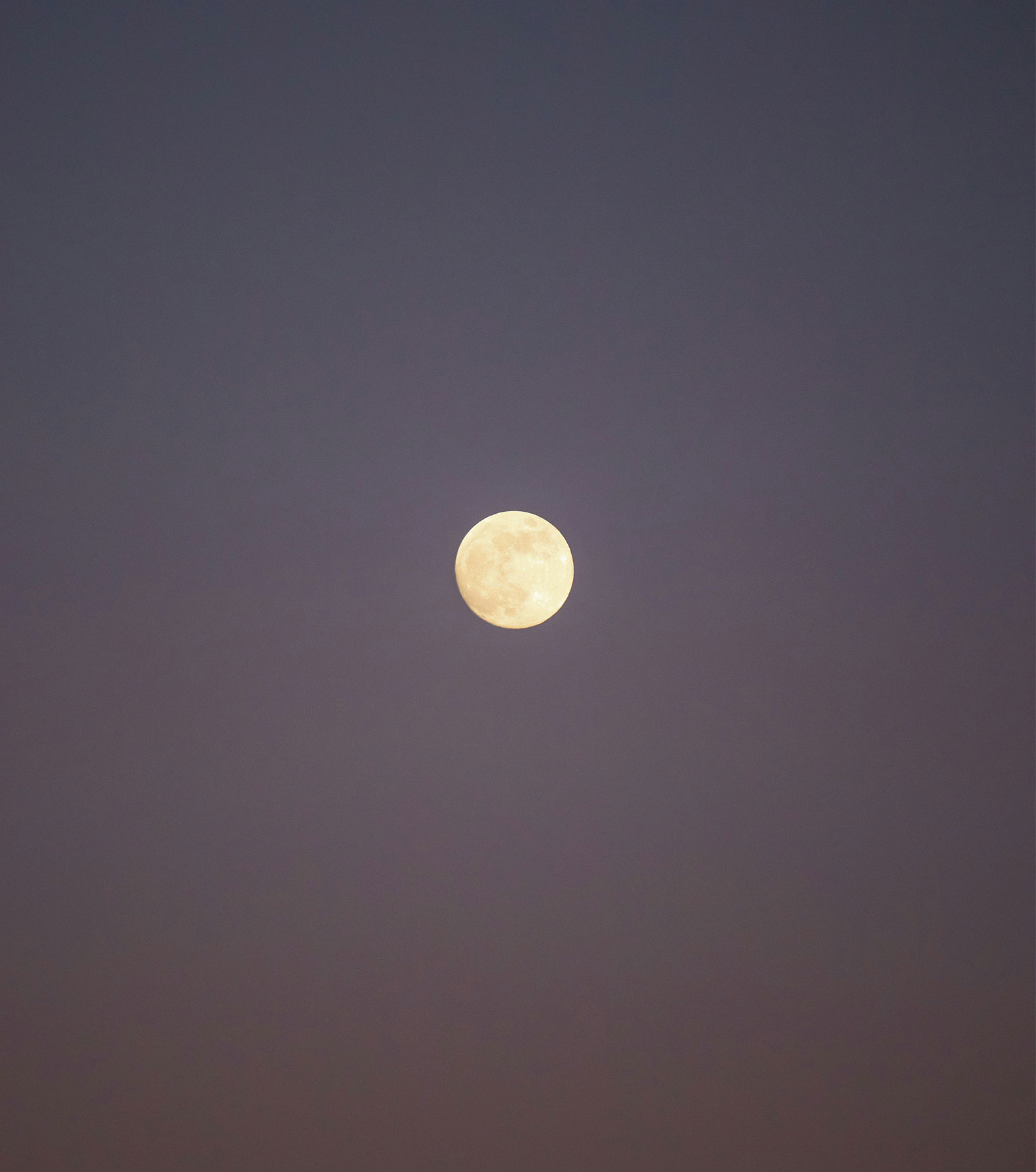
We have a beautiful supermoon, The Hunter’s Moon on October 17th so here is a magical mediation for you from our favorite meditation muse - Rachel Hillary.
Here’s a little more information from Rachel…
We meet on top of a beautiful mountain for this goddess meditation. This is a visual guided journey, with affirmations, to help you tap into the true divine being you are! To help you remember the ancient magic within you, and the power of the full moon, and your union with this moon, as we are all one. This is not a formal full moon ritual, more a cosmic adventure into the spirit and the self, for the bold and wild of heart. The journey is within yourself.
I hope you enjoy.
lots of love,
Rachel
Each month we will have a positive affirmation. I recommend you print out this affirmation and put it in your sketchbook or somewhere in your studio. Recite the affirmation out loud each time you show up to create. Saying words aloud is powerful and can begin to re-write some of our own limiting beliefs or calm our fears. Try it now…
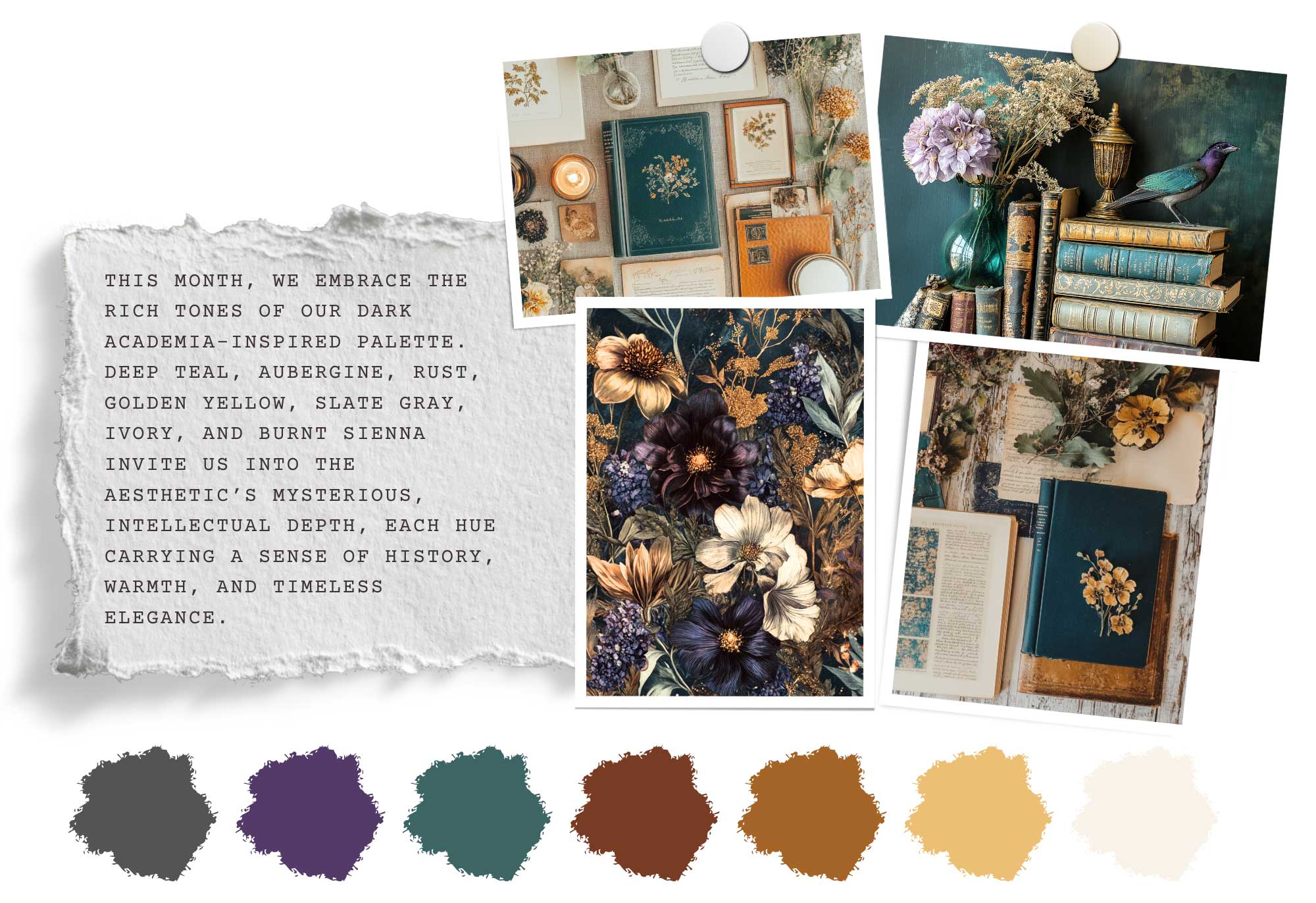
This month, we immerse ourselves in the rich and evocative tones of our dark academia-inspired color palette. These carefully selected colors—Deep teal, Aubergine, Rust, Golden Yellow, Slate Gray, Ivory, and Burnt Sienna—invite us to explore this aesthetic's mysterious and intellectual depth. Each hue carries a sense of history, warmth, and timeless elegance, creating a mood that is both nostalgic and profoundly inspiring.
As we work with these colors, we’ll uncover how they enhance the moodiness and sophistication of our artwork, adding layers of meaning and emotional resonance. This palette allows us to infuse our creations with the quiet beauty of forgotten libraries, the textured charm of aged manuscripts, and the comforting warmth of autumnal hues. By embracing these tones, we can deepen our connection to the dark academia theme, crafting pieces that are both introspective and visually compelling.
This month, we turn our focus to the enigmatic and captivating world of Edmund Dulac, our chosen Master Artist. Dulac's work embodies the essence of mystery, beauty, and intellectual depth—qualities that align perfectly with our exploration of the dark academia theme. His ability to weave intricate stories through his art, using rich color palettes and meticulous detail, offers us a timeless source of inspiration. As we delve into his life and work, we’ll discover how his approach to storytelling through art can inspire our own creative journeys, encouraging us to embrace the depth and complexity that makes our work truly resonate.
Edmund Dulac was born on October 22, 1882, in Toulouse, France. He began his artistic education at the École des Beaux-Arts in Toulouse, where he initially studied law, but his passion for art soon led him to pivot toward a career in illustration. In 1904, at the age of 22, Dulac moved to London, a decision that would profoundly shape his career and legacy.
Once in London, Dulac quickly became associated with the burgeoning golden age of illustration, a period marked by a resurgence of lavishly illustrated books. His work was first published in 1907 when he illustrated an edition of the Brontë sisters’ novels. However, it was his work on "Stories from The Arabian Nights" in 1907 that truly established him as a leading figure in the world of book illustration. Dulac’s style, characterized by its intricate detail, rich color palettes, and an otherworldly sense of beauty, made him a favorite among publishers and readers alike.
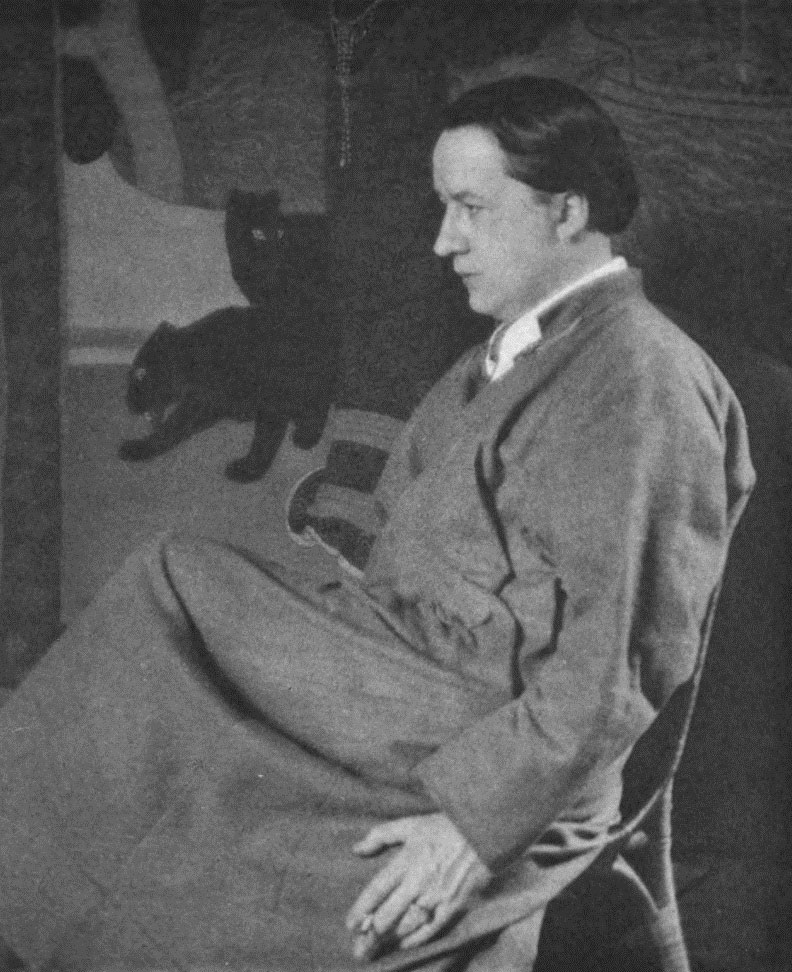
Throughout his career, Dulac illustrated many classic works, including "The Rubaiyat of Omar Khayyam" (1909), "The Sleeping Beauty and Other Fairy Tales" (1910), and "The Bells and Other Poems" by Edgar Allan Poe (1912). His work also extended beyond books; he designed postage stamps, banknotes, and even theatrical sets. Dulac passed away on May 25, 1953, leaving behind a legacy that continues to inspire artists and creatives to this day.
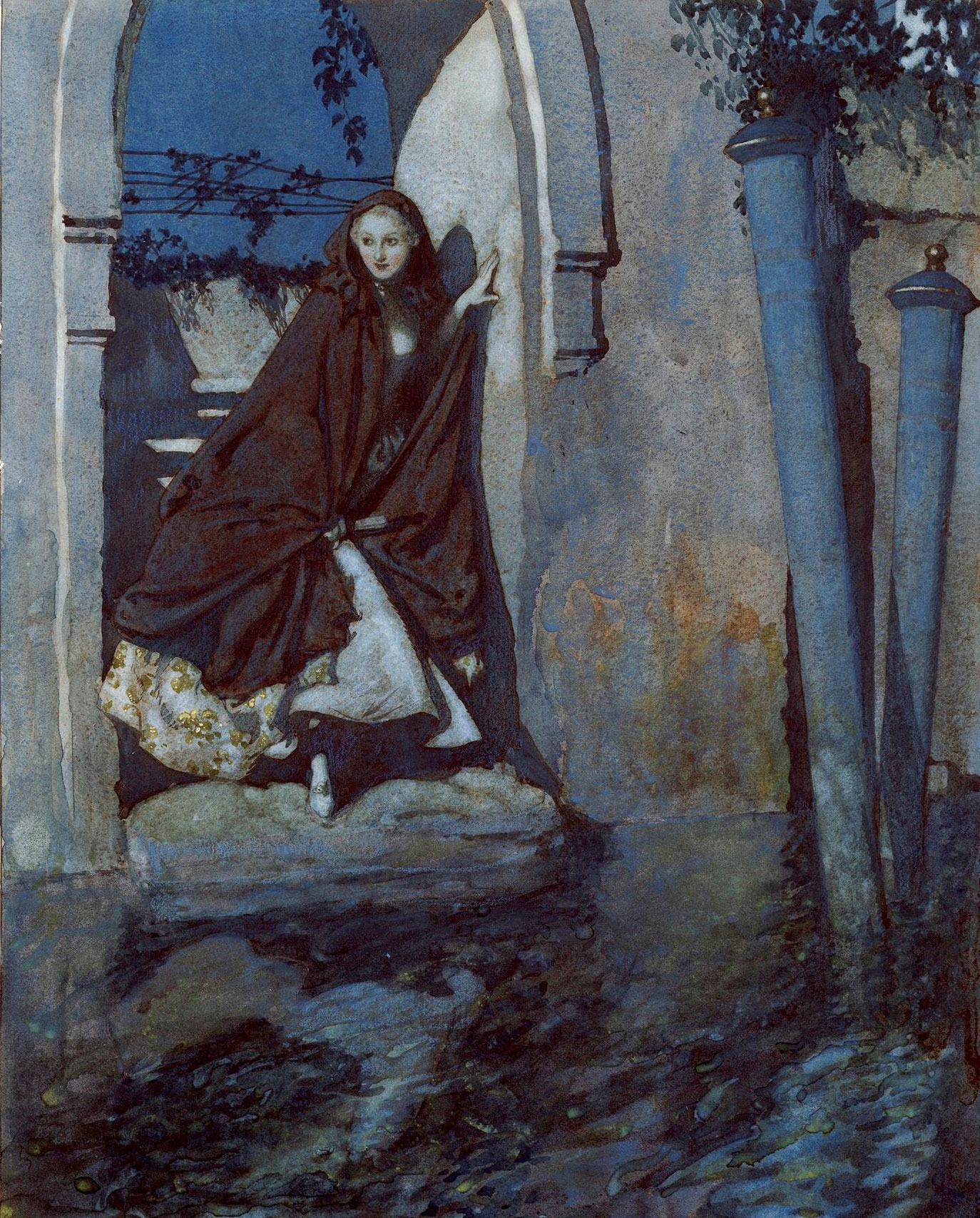
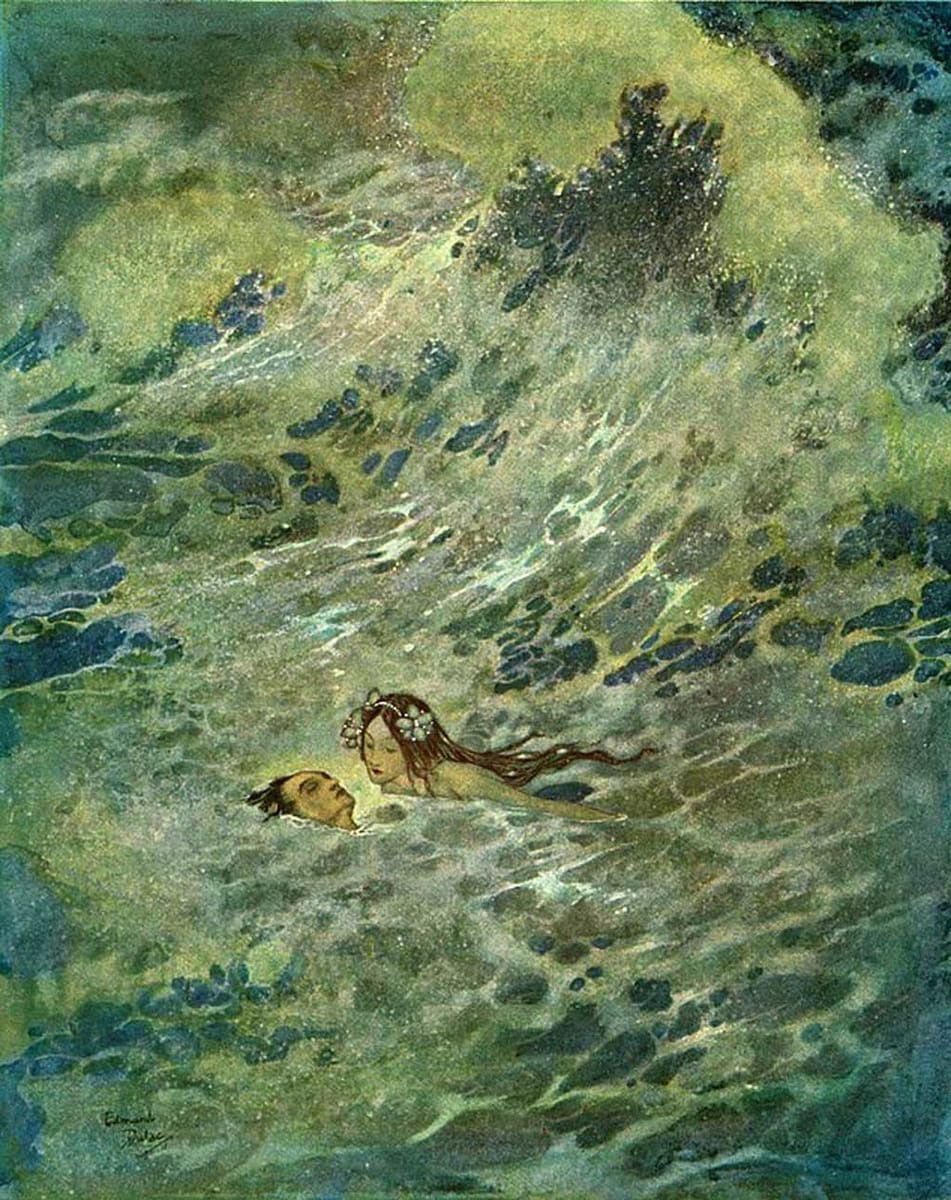
Edmund Dulac’s work resonates deeply with the themes of dark academia, mystery, and intellectual depth, making him a timeless source of inspiration for modern artists and creatives. His illustrations often depict scenes of fantasy and fairy tales, but they are imbued with a sense of melancholy, intrigue, and otherworldly beauty that align perfectly with the dark academia aesthetic.
One of the most compelling aspects of Dulac’s work is his masterful use of color and composition to evoke a sense of mystery. His illustrations are often rich with deep blues, purples, and muted golds, creating an atmosphere that feels both inviting and haunting. This color palette, along with his intricate detailing, draws viewers into a world that is at once familiar and entirely fantastical — which blends the nostalgia of academia with the allure of the unknown
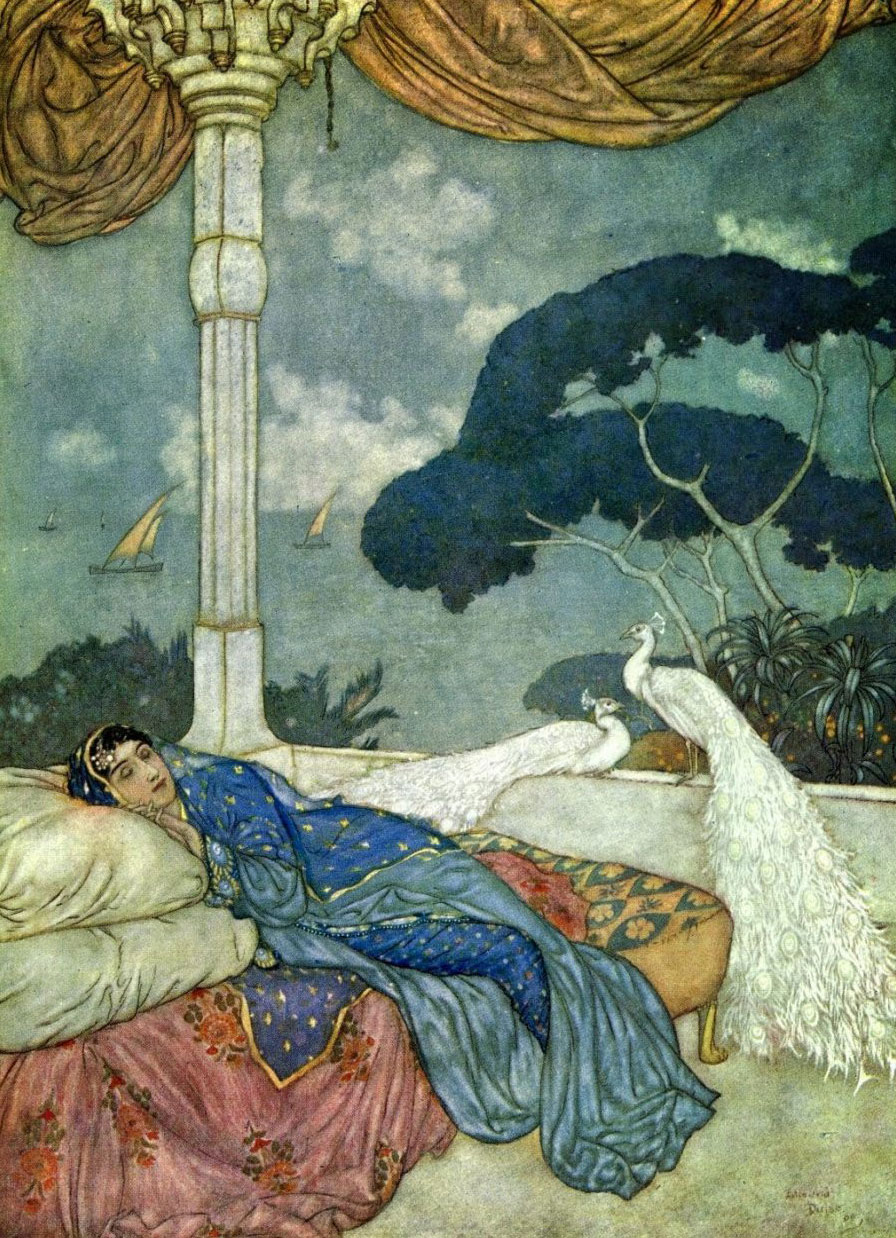
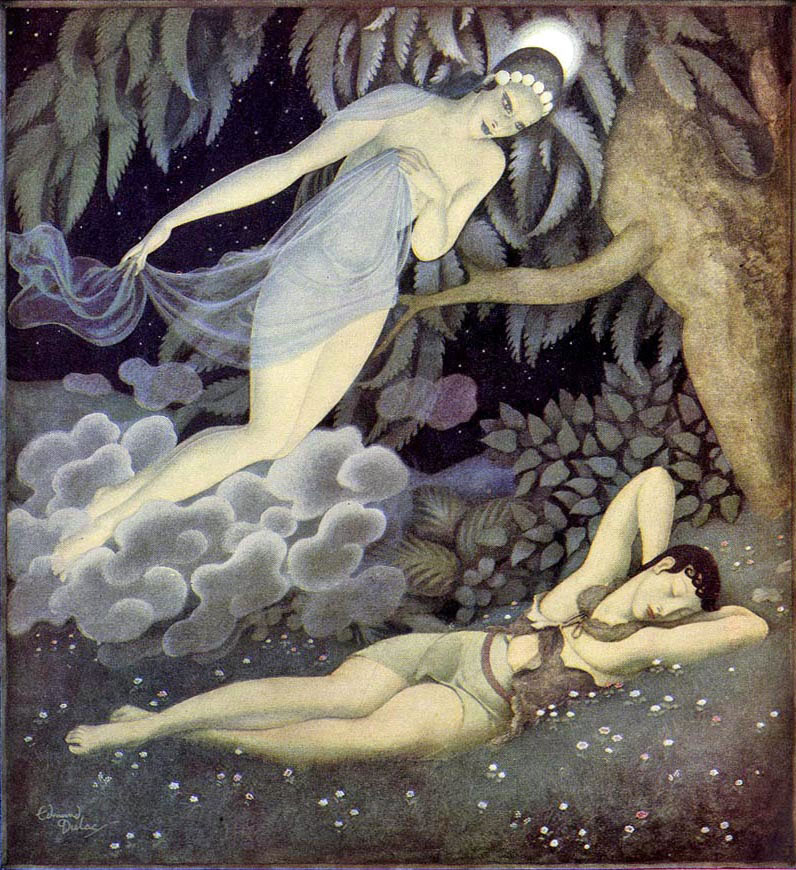
For the modern artist, Dulac’s work offers a wealth of inspiration. His ability to create detailed, immersive worlds through his art can encourage us to explore our own imaginations more deeply. Dulac’s illustrations remind us that beauty often lies in the details, in the careful composition of elements that, when combined, create a whole that is greater than the sum of its parts.
Moreover, Dulac’s work exemplifies the power of narrative in art. Each of his illustrations tells a story, often one filled with complex emotions, hidden meanings, and layers of symbolism. This storytelling aspect is something that modern artists can draw from.
In the context of dark academia, where the focus is often on the intersection of knowledge, mystery, and beauty, Dulac’s work stands as a quintessential example of how art can evoke a deep sense of wonder and curiosity. His illustrations not only adorn the pages of classic literature but also elevate the text, adding a visual dimension that invites deeper contemplation.
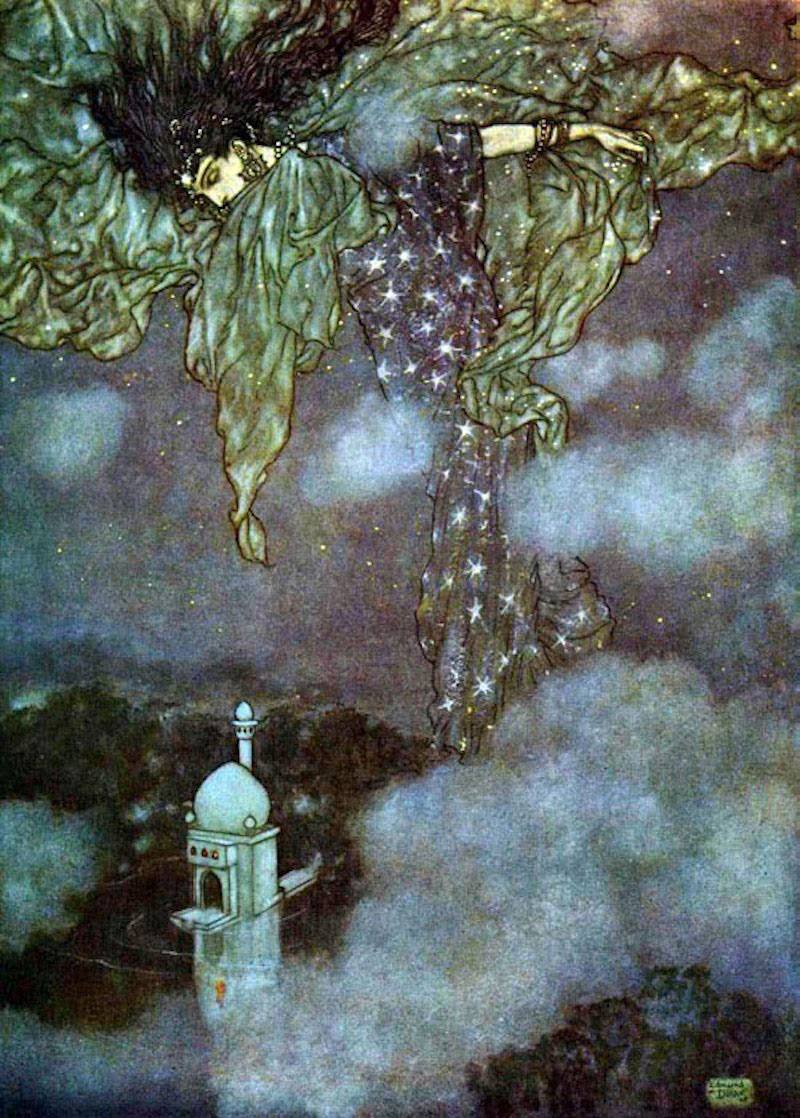
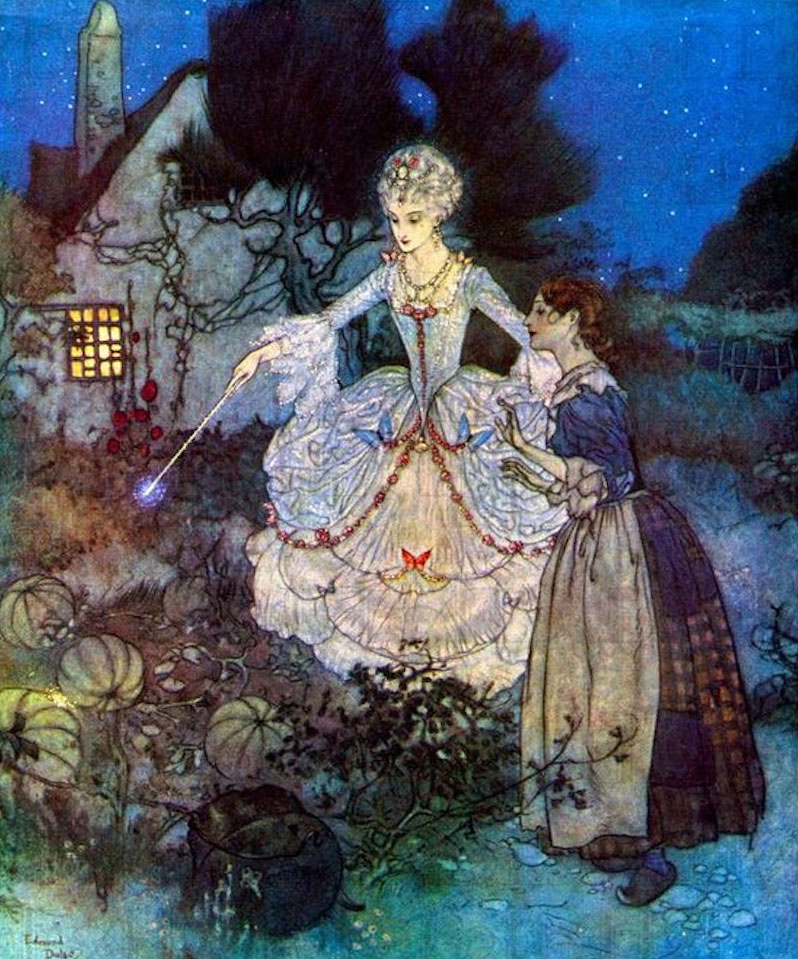
For us modern creatives looking to incorporate elements of dark academia into our work, Edmund Dulac’s legacy serves as a powerful guide. His dedication to craft, his ability to blend beauty with an underlying sense of mystery, and his skill in storytelling through art are all qualities that can inspire today’s artists. Whether you are illustrating a book, designing a space, or creating a piece of art, channeling the spirit of Dulac can lead to work that is not only aesthetically pleasing but also rich with meaning and intellectual depth.
In an age where digital media often prioritizes speed and simplicity, Dulac’s meticulous approach to his work reminds us of the value of patience, attention to detail, and the pursuit of artistic excellence. By embracing these principles, modern artists can produce work that resonates with the same timeless quality that defines Edmund Dulac’s art—a quality that continues to captivate and inspire, even decades after his passing.
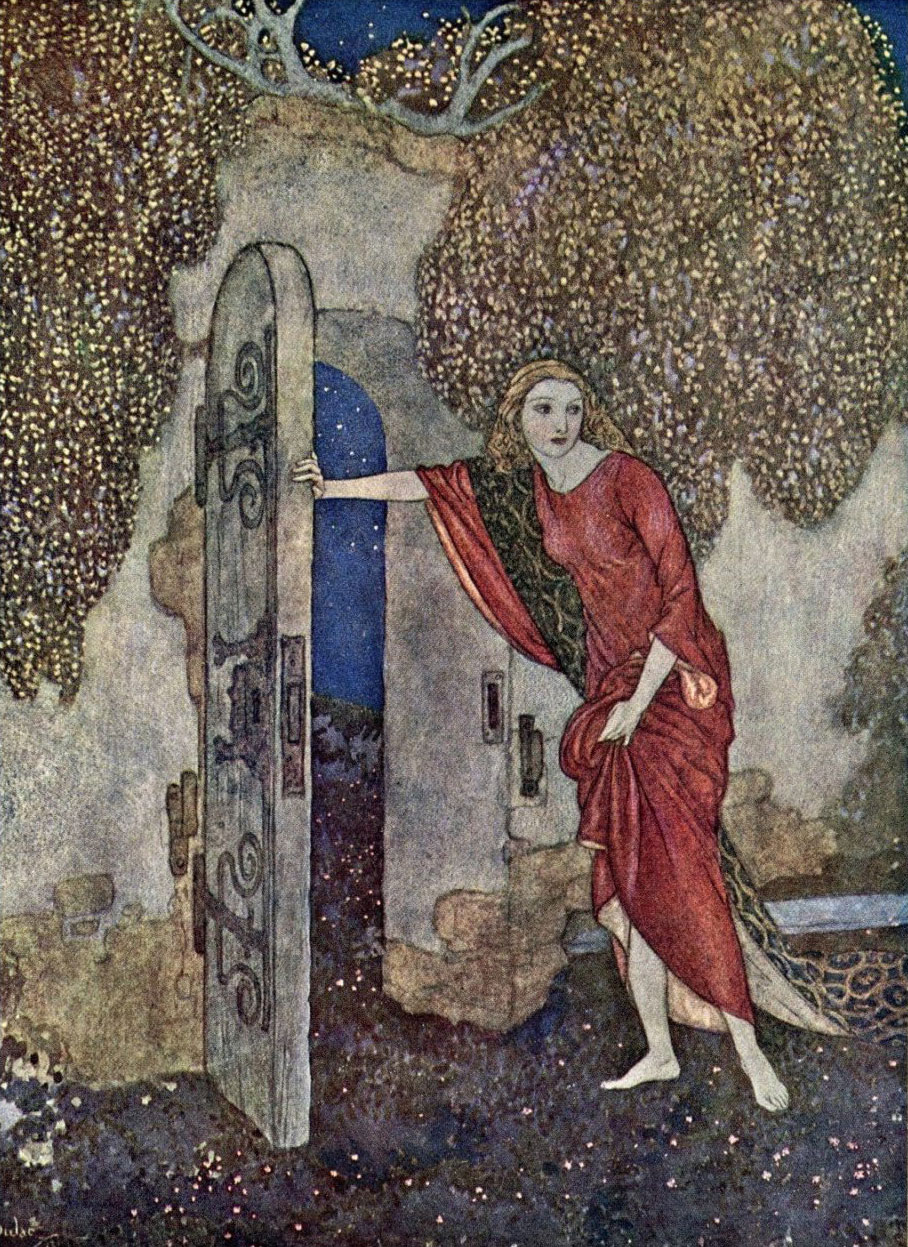
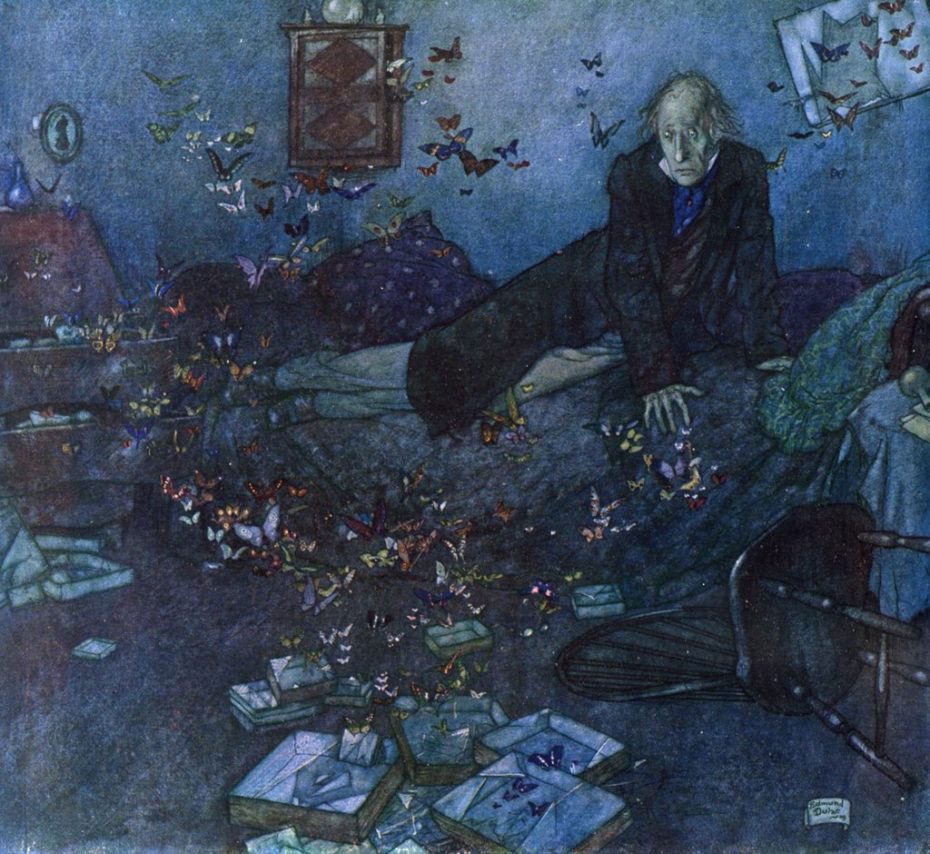
Start by drawing a simple, closed book. Focus on basic shapes—rectangles for the book cover, and a few lines for the spine and pages. Once you’re comfortable with the shape, add some details like an old-fashioned clasp, a ribbon bookmark, or an embossed symbol on the cover. Add color if desired.
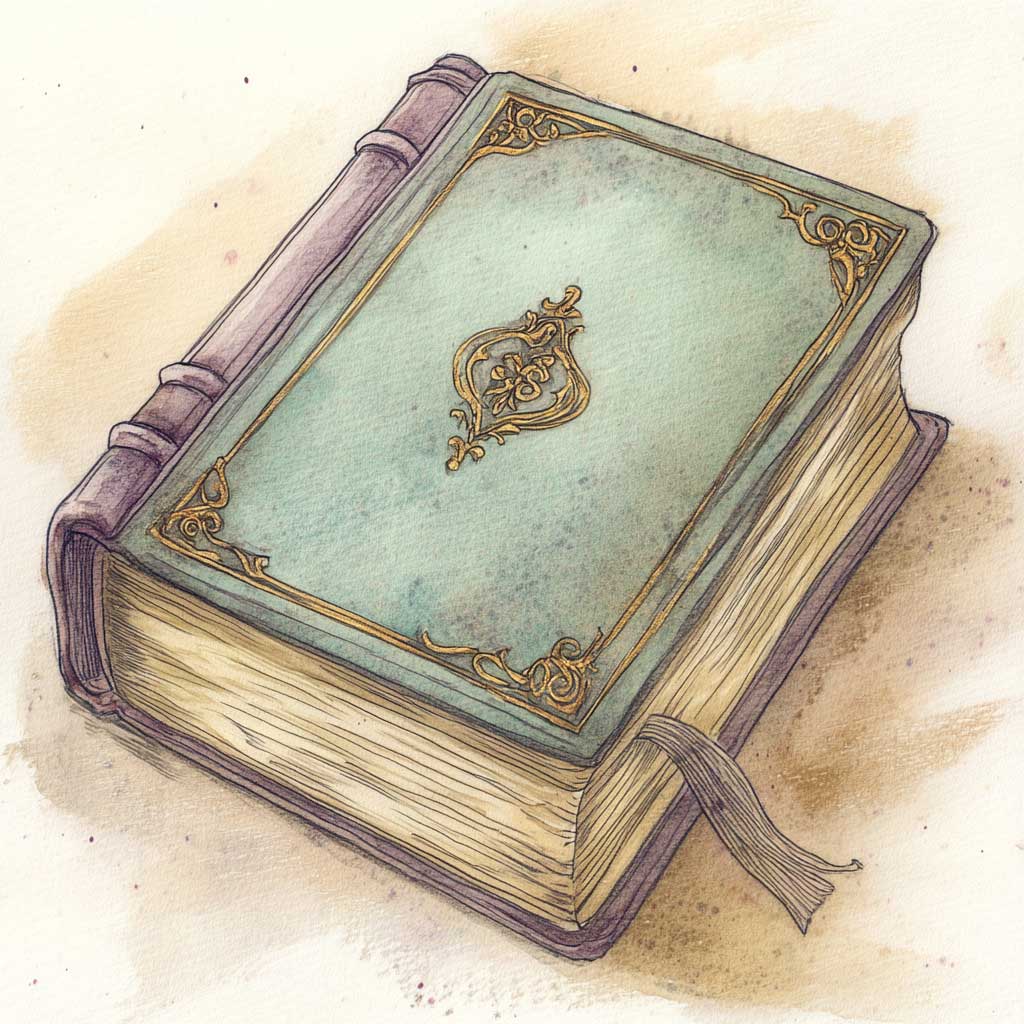
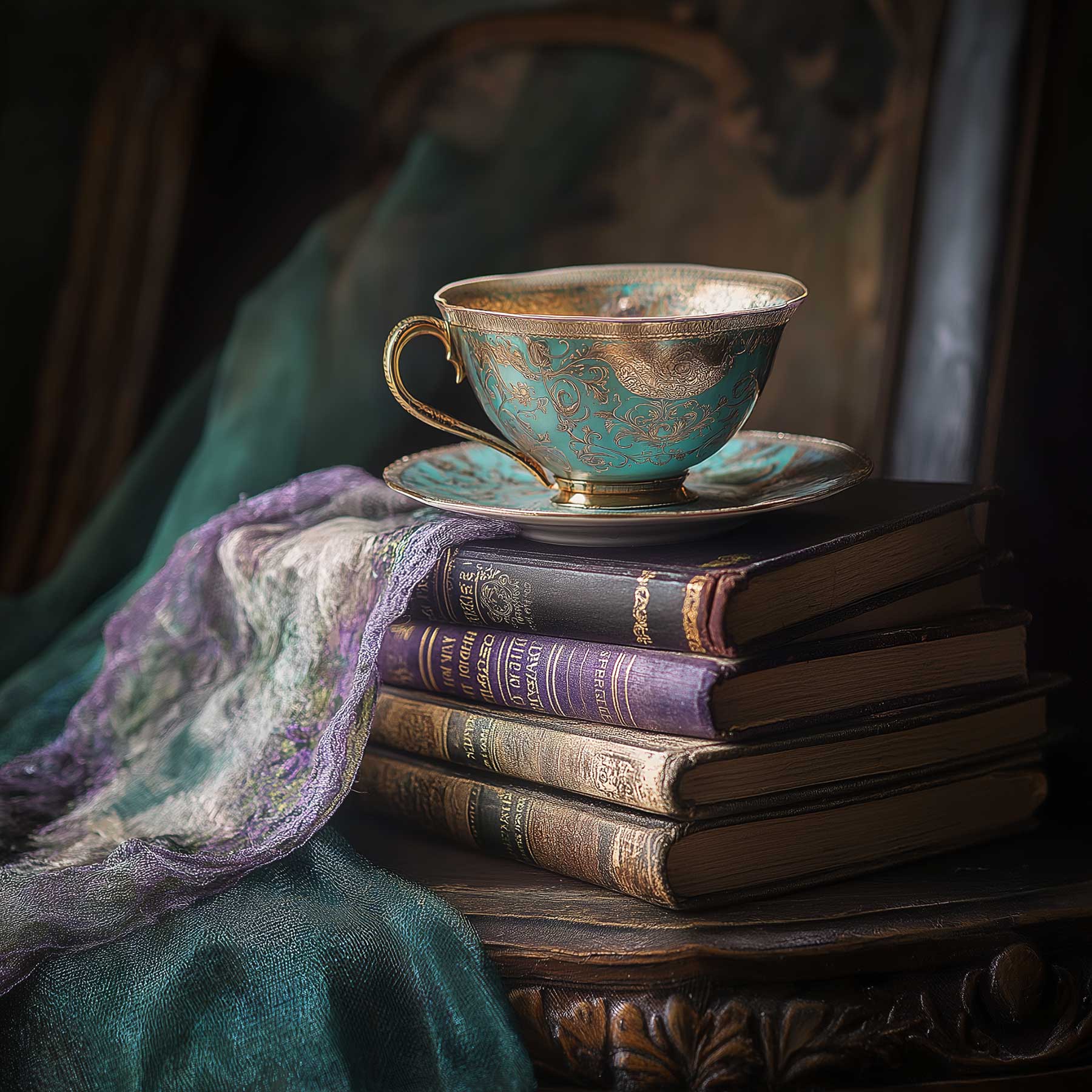
Choose a simple object from your surroundings—like a cup or a candle, or a stack of books. Place it near a light source and observe how the light creates shadows. OR you can use the provided still-life photo as your inspiration and reference. Begin by lightly sketching the outline of the object, then practice shading the areas where the shadows fall. Add color if you like!
Sketch a simple building facade or a section of a wall. This could be as basic as drawing a few lines to represent bricks or a window. Then, add creeping ivy or vines growing over the surface. Start with basic leaf shapes and lines for the vines, and don’t worry about making them perfect—let them flow naturally. Add paint or any othe medium you enjoy!
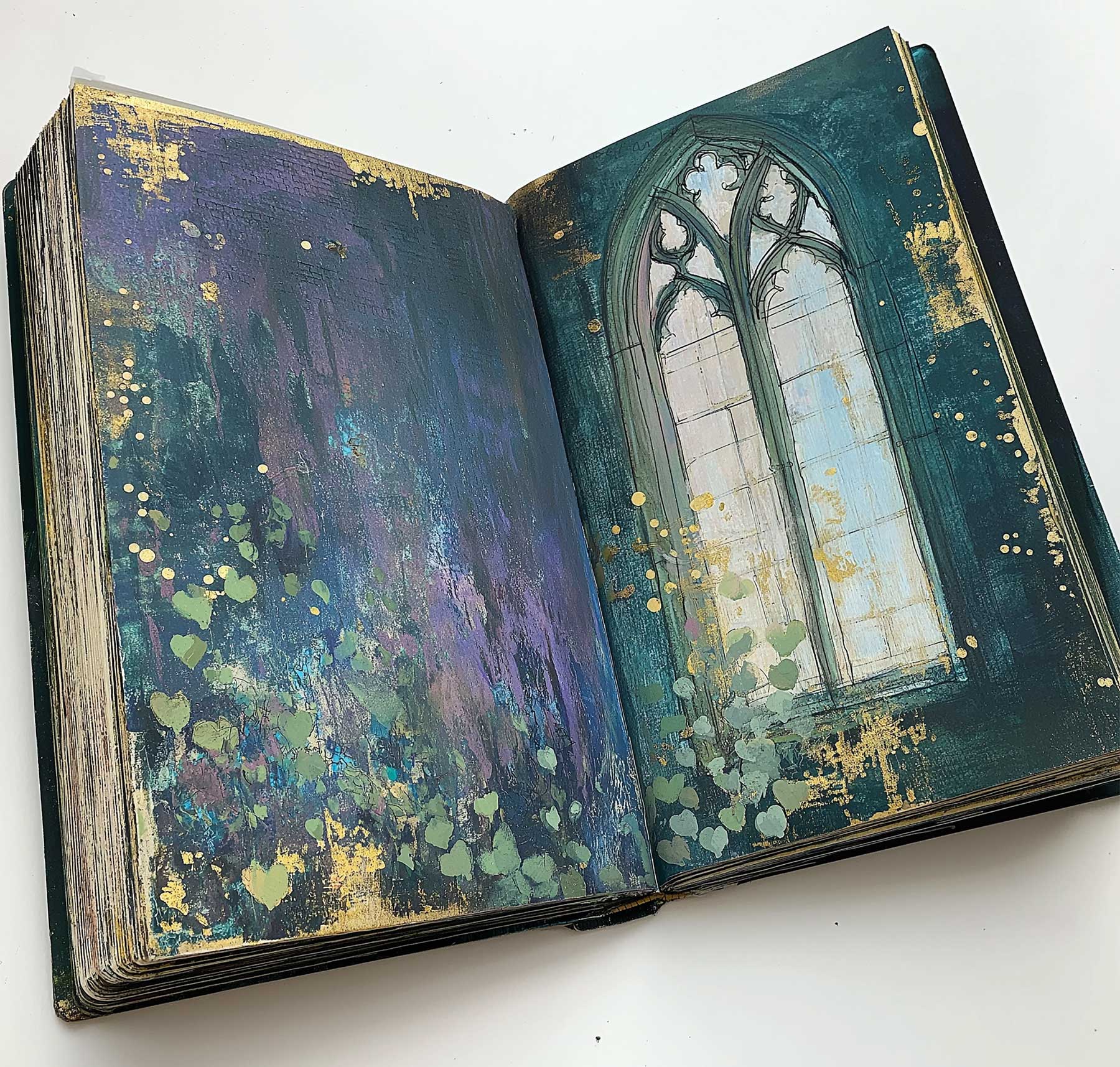
In this creative lesson, we’ll explore the symbolic power of the pearl, crow, and key. Pearls, a symbol of wisdom and transformation, have personal meaning for me. The crow serves as a mystical messenger, while the key embodies possibility, adventure, and the unknown.
In this piece, Natalie will guide you through capturing the beauty of these symbols, allowing your imagination to bring them to life. Whether you’re working on a wooden panel or watercolor paper, let’s add a touch of magic to this enchanting composition.
You can also listen to this month’s issue of the Studioworks journal. I find I love listening to books, podcasts and music while I draw, paint or go on a long walk. Enjoy.
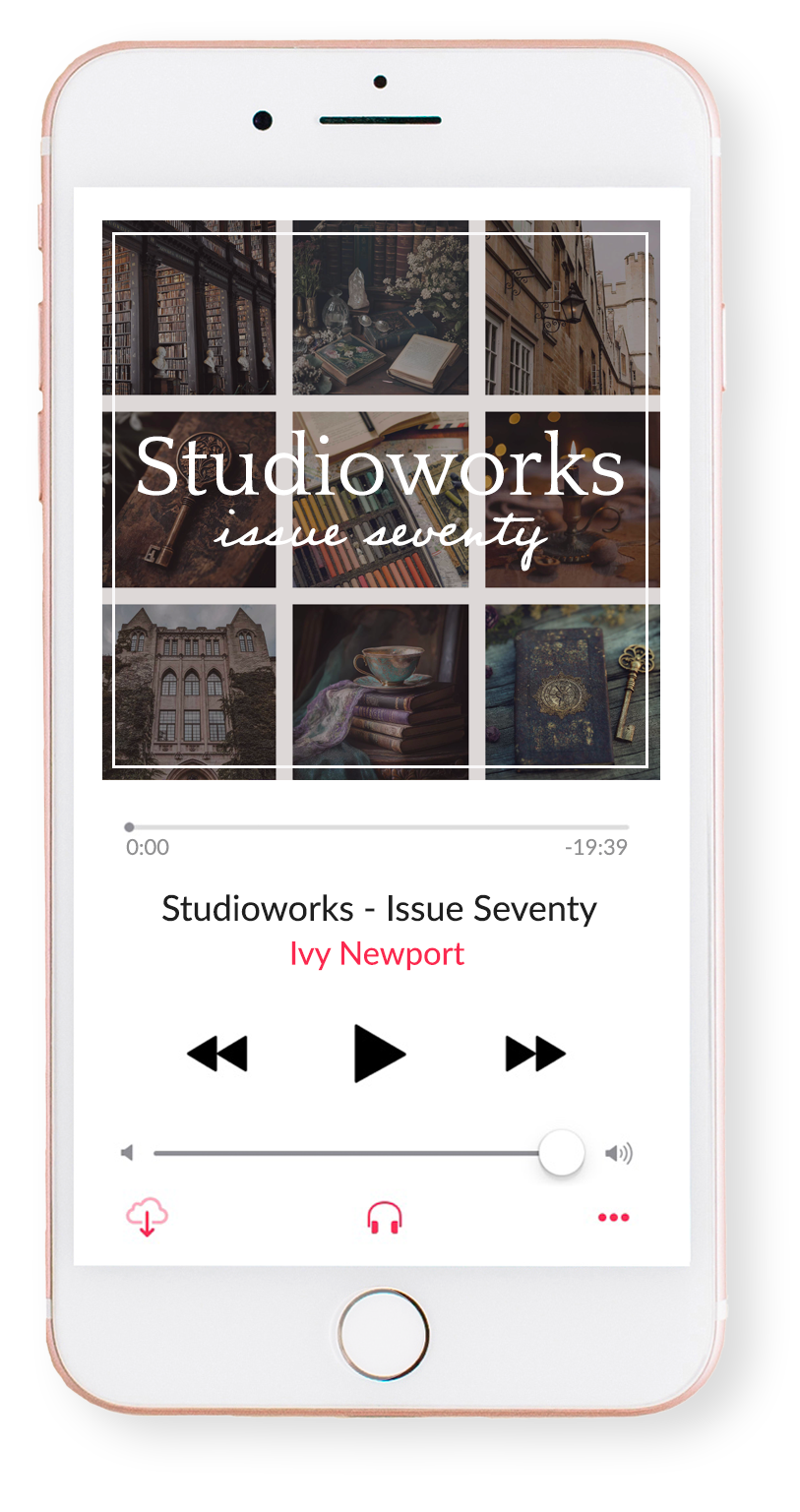
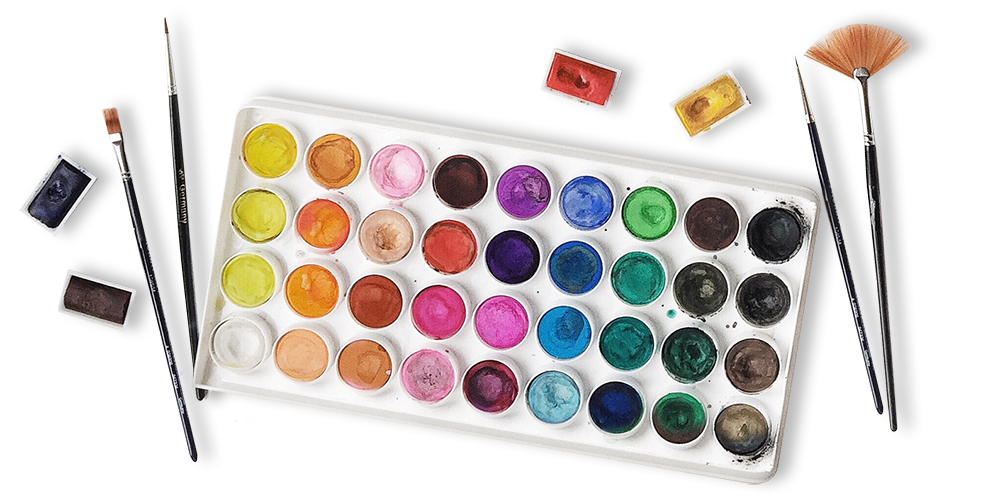
One of my favorite things to do is to curate inspiration. From Pinterest boards to books, resources, playlists and more - I love to share anything that might facilitate learning, expansion, and sparks of curiosity! Being an artist, we naturally crave these things so here are some of this month’s picks from me to you.
I had so much fun curating this list. I hope you enjoy!!
Here are just a few of our fantastic classes! I highly recommend checking them out if you haven’t already. Enjoy!